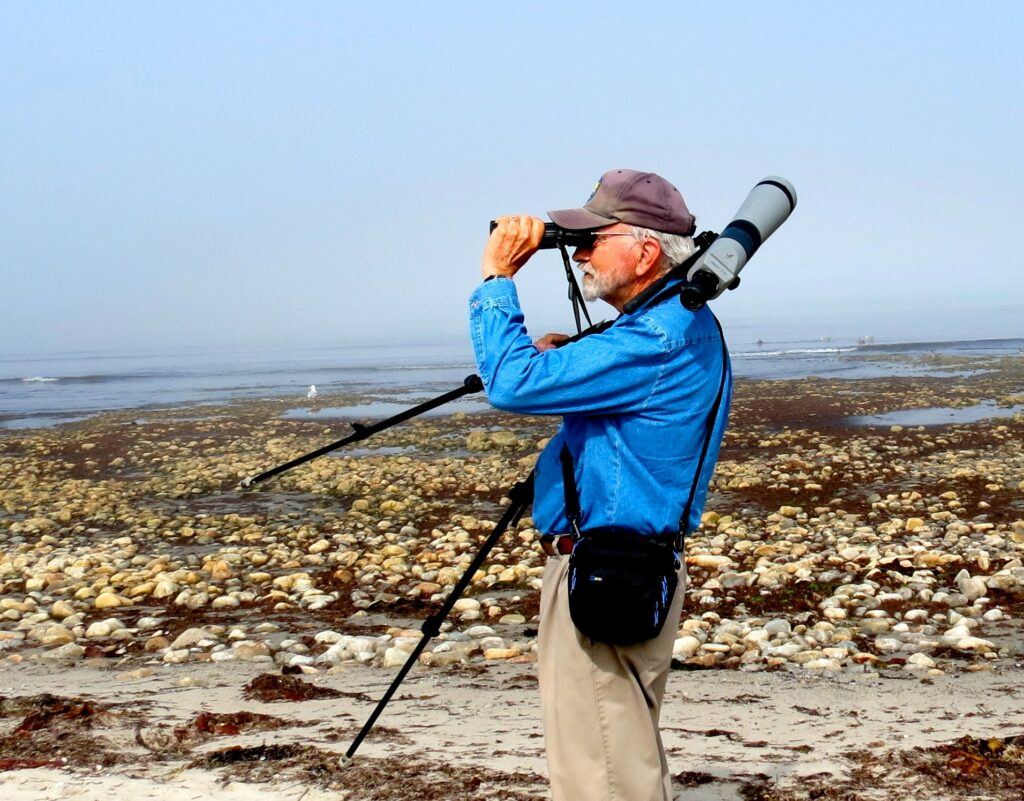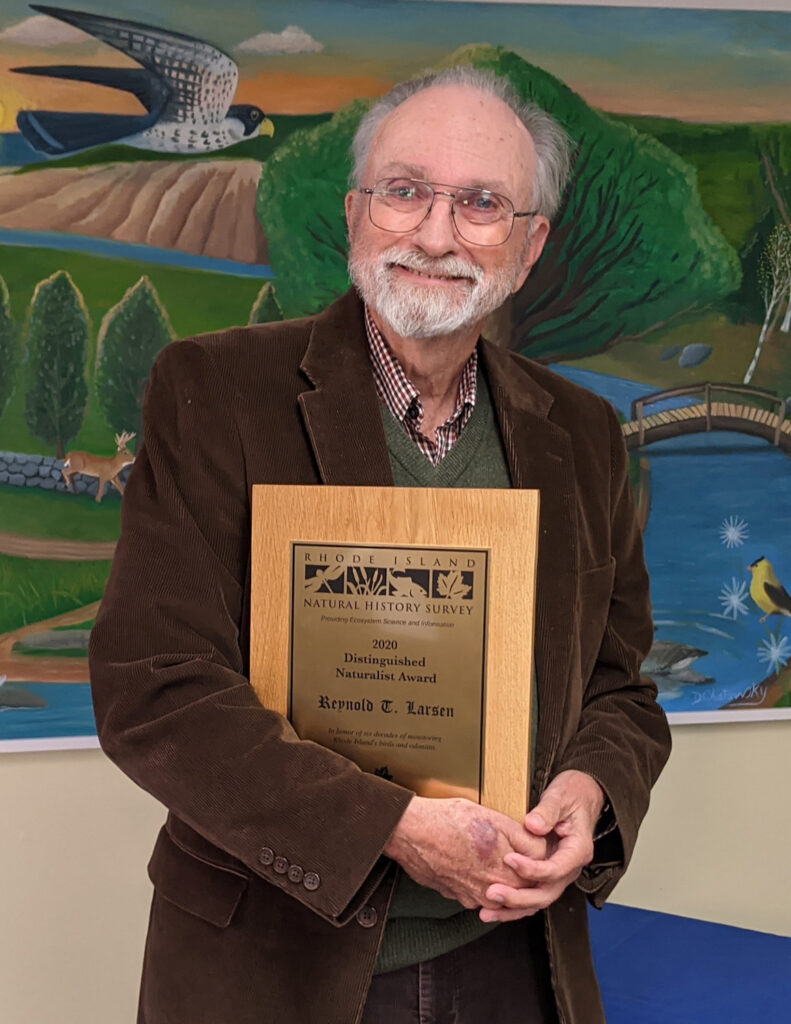
Birders sometimes speak of a “spark bird”: the first bird that really grabbed their attention, often at an early age…a bird that “sparked” their love of birding. It may be a bird as common as a robin; it may be something more exotic, like a roseate spoonbill. For Rey Larsen, the recipient of this year’s Rhode Island Natural History Survey Distinguished Naturalist Award, it was more of a “spark project.” As a fourth-grade student, Rey joined his class in using Audubon birding kits his teacher had ordered. By the time a year had passed, Rey had recorded 17 species. Not bad for a nine-year-old.
Dr. Larsen was a physician in the U.S. Navy and served as ship’s surgeon in submarines. In 1963, while stationed in New London, Rey would pursue his other passion in life – birdwatching – often at the Napatree Point Conservation Area. Though his work took him around the world, he eventually settled in Rhode Island. When he did, he began to inventory birds across the state, maintaining meticulous records of what he observed and where.
Nearly 60 years later, Reynold Larsen has submitted over 6,000 checklists to the Cornell Lab of Ornithology’s eBird database. His lists document 297 bird species from Rhode Island. These numbers are astonishing and have made a significant contribution to the body of knowledge surrounding Rhode Island birds, their migrations, and their habitats. His expertise in other winged creatures led him to produce over 470 damselflies and dragonflies records while working with biologist Ginger Brown in assembling an atlas of Rhode Island’s odonata. He has mentored innumerable naturalists, students, and birders as they find their own “spark birds.”
Today Rey still patrols the Rhode Island shoreline, carefully recording his observations and sharing his discoveries with everyone interested. Here are some of the comments made by those with firsthand knowledge of Reynold Larsen’s extraordinary dedication.

- Our most stalwart and dedicated volunteer, Reynold “Rey” Larsen, started counting birds at Napatree on a cool, foggy morning on November 23, 1963. Since then, Rey has returned to Napatree 626 times over the last 54 years to tally 228,393 individual birds of 174 species.
- Although Rey precedes the Millennials and Gen X’ers, he uses all the latest tools to record and share his bird observations. He ranks as THE TOP eBirder in the state in terms to total checklists submitted (6,090), #2 has submitted 5282 checklists, with most top eBirders submitting far less than 1000 checklists. Thus, the information he has compiled contributes substantially to our understanding of the distribution and abundance of birds in Rhode Island.
- Napatree Point Conservation Area is designated as a Globally Important Bird Area by the National Audubon Society. That designation is highly leveraged on Rey’s data.
- Rey produced more than 470 records for the Odonata Atlas and carefully prepared high-quality museum specimens to document these records. He willingly slogged the state’s ponds and wetlands with great enthusiasm, was a skilled netter of fast flying dragonflies, and was a great member of the Odonata Atlas team.
- He is a walking Wikipedia of ornithological wisdom.
- If you are lucky enough to join Rey on a bird survey, you’ll be treated to his marvelous wit and historic tidbits as he recalls the last time he recorded a seldom seen species: “The last ______ I observed here was a female in 1993…”. A generous mentor, Rey offers natural history information, explaining various plumages or territory ranges to novices like me. Rey Larsen is certainly Napatree’s most precious “natural resource” and I dare say, one of Rhode Island’s too.
For his dedication to ornithology, for his significant contributions to the data record of bird diversity and abundance in Rhode Island which spans six decades, and for his eagerness to share his knowledge with those around him, Reynold T. Larsen is a most-deserving recipient of the 2020 Rhode Island Natural History Survey Distinguished Naturalist Award.